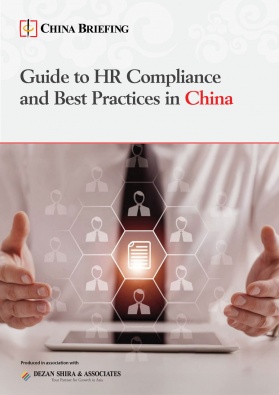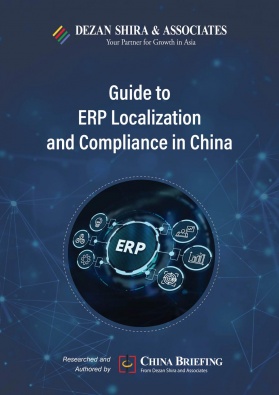China’s New Guidelines to Boost Services Consumption Ignite Optimism in Education and Training Sector
China’s State Council introduced new guidelines to enhance service consumption, focusing on key areas such as dining, domestic services, and eldercare. Among other measures, those targeting education and vocational training services have spurred optimism in the market, leading to a substantial rise in education stocks. Nevertheless, experts hold differing views, stating that these measures do not indicate a relaxation of regulations on after-school tutoring.
On August 3, 2024, China’s State Council introduced new guidelines to advance high-quality service consumption. Titled Opinions on Promoting the High-Quality Development of Service Consumption, the guidelines encourage local governments to explore opportunities in key traditional sectors such as catering, housekeeping, and elderly care. They also promote growth in “life-enhancing consumption” areas like entertainment, tourism, sports, education, and residential services, and aim to expand “new types of consumption,” including digital, green, and health services.
This initiative comes as a response to the slower-than-expected recovery of the service sector following the pandemic. Despite a notable 7.5 percent increase in service sector retail sales in early 2024—outpacing the growth of consumer goods—the sector’s performance remains below pre-pandemic levels. The guidelines are focused on optimizing and expanding service offerings to better meet the growing demand for personalized and high-quality services.
Furthermore, the guidelines align with broader economic strategies to create jobs, enhance income levels, and strengthen market confidence. They propose concrete measures such as expanding market access in telecommunications, education, and healthcare, accelerating the resumption of international flights, and providing diversified payment options. This approach also includes a focus on improving service quality through enhanced regulation and increased policy support.
Since the release of the guidelines, the education market has seen a continuous rebound, with the stock prices of several education companies rising steadily. However, leading companies in the industry believe that “the education and training business remains a highly regulated sector, and the company will closely monitor relevant policy developments.” Several experts have pointed out that the statements in the guidelines are consistent with previous positions, and the promotion of high-quality service consumption does not imply a relaxation of regulations on after-school tutoring and subject-based training. Instead, vocational and social training remains the main direction for the sector.
In this article, we delve into the key components of these guidelines, analyze their potential impact across various service sectors, and examine how they could shape the future of service consumption in China.
What service-boost measures are proposed in the guideline?
The guidelines are designed to drive growth and improvement across traditional consumption sectors. By enhancing service quality, increasing accessibility, and fostering infrastructure development, the guidelines reflect a commitment to improving consumer experiences while promoting broader economic growth through targeted support and innovation. In general, many services cited in the guidelines are those that need to be further developed amid China’s economic elevation.
Enhancing dining and accommodation
The guidelines aim to elevate the dining and accommodation sectors by enhancing service quality and celebrating regional culinary traditions. They focus on improving restaurant standards and fostering the growth of renowned culinary brands within China.
There is a strong emphasis on promoting traditional cooking techniques and local food cultures, with initiatives designed to create food-centric towns and villages. Events like the “Chinese Food Festival” are planned to boost local dining experiences. Additionally, the guidelines encourage international restaurant brands to establish their first and flagship outlets in China.
In the accommodation sector, the guidelines aim to raise service standards and support the development of high-end hotels and guesthouses catering to tourism, wellness, and educational travel. Rural development is also prioritized, with efforts to repurpose vacant properties and collective land for countryside hotels and guesthouses, thus enhancing the overall accommodation landscape.
Revitalizing domestic services
In the realm of domestic services, the guidelines aim to improve both the quality and availability of home-based services. They support the development of employee-based home service companies and seek to enhance career advancement opportunities for service workers.
The guidelines promote increasing the presence of home services within communities and expanding the overall supply of these services. Key initiatives include skill enhancement programs for home service workers and the establishment of reputable service brands. Additionally, the introduction of a digital certification system is designed to boost transparency and build consumer trust in the sector.
Advancing eldercare and childcare
The guidelines underscore the importance of advancing the eldercare and childcare sectors within the broader framework of the silver economy. They emphasize the integration of smart technologies in health and aging services and aim to enhance accessibility in both public spaces and residential settings.
A key focus is the development of a coordinated care system that merges home and community-based services. This includes expanding and enhancing eldercare and childcare facilities, with specific attention to repurposing vacant spaces and minimizing operational costs. The guidelines also advocate for fair utility pricing for these institutions and encourage financial institutions to offer tailored financial products that meet the unique needs of the eldercare and childcare sectors.
Stimulating consumption vitality
In this section, the guidelines outline strategic initiatives to invigorate various consumer sectors and boost overall consumption. By focusing on cultural, entertainment, tourism, sports, education, and residential services, the measures suggest to enhance consumer experiences and drive spending across these key areas.
Cultural and entertainment
The guidelines aim to revitalize the cultural and entertainment sectors by expanding and diversifying consumer experiences. They propose a broadening of cultural and tourism activities through initiatives like the “Hundred Cities, Hundred Districts” program, designed to enhance public engagement with cultural events. A significant focus is placed on safeguarding and promoting intangible cultural heritage, alongside developing culturally rich projects that highlight regional and ethnic diversity.
To invigorate the cultural performance market, the guidelines advocate for more efficient approval processes and an increase in the frequency of performances. They support a wider variety of film offerings and innovative distribution methods, such as differentiated release strategies, to drive film-related consumption. The guidelines also emphasize improving digital media quality, including network literature, online performances, and interactive media. Advances in high-definition television and the growth of immersive and new digital entertainment formats are encouraged to enhance overall media consumption experiences.
Tourism
In the tourism sector, the guidelines are designed to elevate the quality and variety of travel experiences by focusing on the development of exemplary cultural and tourism cities, as well as nighttime cultural hubs. Initiatives like the “Beautiful Life Vacation Leisure Project” aim to enhance both leisure and vacation opportunities, while efforts to improve rural tourism seek to boost the attractiveness and quality of countryside destinations.
The guidelines advocate for the integration of tourism with commerce, sports, and cultural activities, creating more immersive and interactive travel experiences. They also support the expansion of new tourism trends such as cruises, RV camping, and aerial tours, alongside measures to improve accessibility for older adults. This includes the introduction of senior-friendly travel trains and enhanced service options.
Local governments are encouraged to offer discounts on entrance fees and seasonal promotions to attract visitors. Improvements in transportation services, such as better transfer options and car rentals, are highlighted, along with more flexible payment methods and expanded visa-free access to facilitate smoother travel experiences.
Sports
The guidelines seek to energize the sports sector by repurposing unused venues and transforming outdated facilities into dynamic sports centers. They advocate for organizing a range of sports events, establishing distinctive sports brands, and securing major international competitions to enhance the sector’s appeal.
A key focus is on fostering community-oriented sports events and promoting the widespread adoption of winter sports across the country. Additionally, the guidelines support pilot programs aimed at boosting sports consumption and developing substantial sports and tourism infrastructure.
Education and training
The guidelines aim to improve education and training by broadening access to high-quality educational resources and enhancing vocational training. They emphasize better integration between educational institutions, research organizations, and community groups to address diverse and personalized learning needs.
In particular, the guidelines stress the need for high-standard vocational schools and programs to elevate vocational education. They also support the involvement of reputable third-party organizations to offer high-quality extracurricular services and encourage partnerships with international universities to enrich educational experiences and expand opportunities.
Residential services
In the residential services sector, the guidelines promote partnerships between property service companies and providers of eldercare, childcare, dining, and domestic services. They advocate for the adoption of smart technology solutions, such as intelligent security systems and smart parking, to enhance community living standards. The development of integrated, standardized home services, including renovation and custom design options, is also encouraged.
The guidelines support initiatives to improve residential quality by encouraging home renovations and partial upgrades. They aim to enhance property management services and overall residential experience through these integrated service models.
How to understand the service-boost measures?
A constructive step, but more details required for successful implementation
The State Council’s recent guidelines are expected to energize the services sector and broaden consumer access to a diverse range of services. By attracting globally recognized restaurants to establish flagship stores in China, the guidelines seek to enhance the culinary landscape and stimulate dining-related consumer spending. The development of eldercare and childcare infrastructure promises to address critical needs, fostering growth in these essential sectors while improving quality of life for families and seniors.
In tourism, the potential expansion of visa-free travel could open new opportunities for international visitors, driving tourism-related revenue and promoting cultural exchange. Meanwhile, support for advancements in digital and healthcare services aims to modernize these industries, improving service delivery and accessibility. Collectively, these measures are expected to not only invigorate consumer spending but also create a more dynamic and resilient services sector, contributing to overall economic growth and enhancing the quality of service across various domains.
Despite these prospects, the guidelines also face certain challenges. They outline a broad vision without delving into specific fiscal measures or financial support mechanisms necessary for successful implementation. Additionally, critical economic issues such as the downturn in the property sector, stagnant income growth, and high youth unemployment remain unaddressed, potentially affecting consumer confidence and the effectiveness of the proposed measures. Nevertheless, the guidelines represent a constructive step towards revitalizing the services sector.
With further refinement and more detailed strategies, there is significant potential for these initiatives to drive meaningful progress. By addressing both the outlined challenges and the broader economic context, the guidelines could pave the way for a more dynamic and resilient services sector.
These efforts are already supported by complementary policy updates, including measures to bolster employment for migrant workers and young people. The introduction of a job expansion subsidy for enterprises hiring unemployed youth demonstrates a commitment to improving job prospects and stabilizing the economy. Together, these initiatives reflect a comprehensive approach to boosting service consumption while addressing broader labor market challenges.
Navigating implications on the education sector
Industry experts believe that “education and training” mentioned in the guidelines refers not to after-school tutoring, but to other social trainings such as vocational education, adult education, and non-subject-based training. From the perspective of state policy direction and local regulatory practices, there has been no relaxation in the control of subject-based after-school tutoring.
Currently, the “double reduction” coordination mechanisms are functioning normally across various regions, and administrative supervision is gradually becoming normalized and long-term.
On the other hand, social training encompasses a wide range of areas, with different legal and policy requirements for various types of training aimed at different groups. Boosting service consumption in this area would require categorized policies and more sophisticated regulation mechanisms.
Moreover, amid China’s pursuit of new productive forces, education and training sector players must adapt to the development requirements, continuously improving service quality to better meet consumer needs and stay agile in this competitive market environment.
About Us
China Briefing is one of five regional Asia Briefing publications, supported by Dezan Shira & Associates. For a complimentary subscription to China Briefing’s content products, please click here.
Dezan Shira & Associates assists foreign investors into China and has done so since 1992 through offices in Beijing, Tianjin, Dalian, Qingdao, Shanghai, Hangzhou, Ningbo, Suzhou, Guangzhou, Haikou, Zhongshan, Shenzhen, and Hong Kong. We also have offices in Vietnam, Indonesia, Singapore, United States, Germany, Italy, India, and Dubai (UAE) and partner firms assisting foreign investors in The Philippines, Malaysia, Thailand, Bangladesh, and Australia. For assistance in China, please contact the firm at china@dezshira.com or visit our website at www.dezshira.com.
- Previous Article China’s IP Protection Development: A Comprehensive Overview
- Next Article China’s New Action Plan to Boost Urbanization









